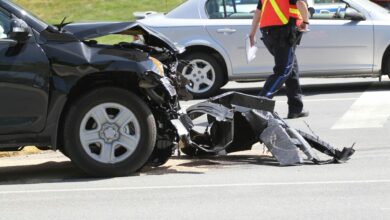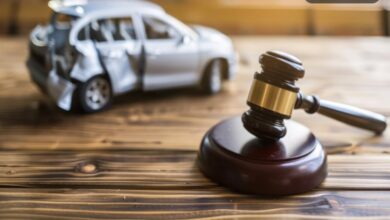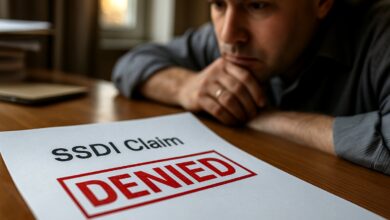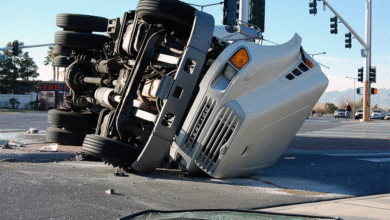Who Is Responsible For A Dog Bite?
States have different laws regarding dog bite responsibility, although in most cases, owner is liable. Find out how to protect your rights after being bitten.

Dog bites are a serious concern that can lead to medical expenses, emotional trauma, and legal complexities. Understanding who is responsible for a dog bite is crucial to determining liability, pursuing compensation, and ensuring proper care for victims. In this article, we will explore the legal principles, factors, and scenarios that determine who is accountable when a dog bite occurs.

Understanding Dog Bite Laws
Dog bite laws vary by country, state, and even municipality. These laws generally outline the responsibilities of dog owners and the circumstances under which they can be held liable for a bite. Here are the primary legal frameworks:
1. Strict Liability Laws
Under strict liability laws, the dog owner is held responsible for a bite regardless of whether they knew the dog was dangerous or whether the dog had a history of aggression. The key elements of strict liability include:
- Ownership: The individual must be the legal owner of the dog.
- Injury: The bite must result in injury or damage.
- Location: Some laws specify that the incident must occur in a public place or when the victim is lawfully on private property.
For example, if a person is bitten by a dog while walking on the sidewalk, the dog owner is typically held liable under strict liability laws.
2. The One-Bite Rule
The “one-bite rule” is based on the notion that a dog owner may not be held liable for the first instance of a dog biting someone unless they knew or should have known the dog had a tendency to bite. Key factors include:
- Prior Knowledge: Evidence that the dog has shown aggressive behavior in the past.
- Negligence: The owner’s failure to take reasonable precautions to prevent the bite.
This rule is more lenient toward dog owners but places the burden of proof on the victim to show that the owner was aware of the risk.
3. Negligence-Based Laws
Negligence laws apply when a dog owner’s careless actions or inactions lead to a bite. For example, if an owner leaves their dog unsupervised in a park where dogs are required to be on a leash, and the dog bites someone, the owner may be held liable for negligence.
4. Breed-Specific Legislation
Some jurisdictions have breed-specific laws that place stricter liability on owners of certain breeds deemed to be dangerous, such as pit bulls or Rottweilers. These laws may require owners to carry additional insurance or adhere to specific containment measures.
Factors That Determine Responsibility
While laws provide a general framework, specific factors can influence who is held responsible for a dog bite. These include:
1. Ownership of the Dog
The dog’s legal owner is typically the first party considered responsible. However, responsibility may extend to:
- Caretakers: If someone else was temporarily responsible for the dog (e.g., a pet sitter or a friend walking the dog), they could share liability.
- Landlords: In some cases, property owners may be held liable if they allowed a dangerous dog to reside on their property and failed to address potential risks.
2. Location of the Incident
The location where the bite occurred can also impact liability:
- Public Places: Owners are often held liable for bites that occur in public areas.
- Private Property: If a victim is lawfully on private property (e.g., a guest or delivery worker), the owner may still be held responsible.
- Trespassing: If a person was trespassing on private property, the owner’s liability might be reduced or eliminated in some jurisdictions.
3. Provocation
If the victim provoked the dog, such as by teasing, hitting, or threatening it, the owner’s liability may be diminished. Courts often evaluate whether the provocation was reasonable or intentional.
4. Owner’s Actions
The actions or inactions of the owner play a significant role in determining liability. Examples include:
- Failure to Leash: Allowing a dog to roam without a leash in areas with leash laws.
- Improper Training: Neglecting to train or socialize the dog.
- Ignoring Warning Signs: Failing to address known aggressive tendencies or warning signs.
5. Dog’s History
A dog’s history of behavior can influence legal outcomes. Evidence of previous bites, aggression, or complaints from neighbors may strengthen a victim’s case.
Liability in Specific Scenarios
1. Dog Bites a Child
When a dog bites a child, the owner is typically held to a higher standard of responsibility. Courts may consider factors such as:
- The child’s age and ability to understand risks.
- The owner’s knowledge of the dog’s temperament around children.
- Supervision provided by the owner and the child’s guardian.
2. Dog Bites Another Animal
In cases where a dog bites another animal, such as another dog or a pet cat, the owner of the aggressive dog may be held liable for veterinary expenses and emotional distress caused to the other pet owner.
3. Dog Bites a Trespasser
If a dog bites someone trespassing on private property, the owner’s liability may depend on:
- Local laws on trespassing and dog bites.
- Whether the owner took reasonable measures to secure the property.
- The level of threat posed by the trespasser.
Steps to Take After a Dog Bite
If you are a victim of a dog bite or the owner of a dog involved in a biting incident, taking appropriate steps can protect your legal rights and health:
For Victims:
- Seek Medical Attention: Treat the wound immediately to prevent infection and document injuries.
- Report the Incident: Notify local animal control or law enforcement to document the case.
- Gather Evidence: Take photos of the injuries, the dog, and the location of the incident.
- Obtain Information: Collect the dog owner’s contact information and any witness statements.
- Consult an Attorney: Seek legal advice to understand your rights and potential compensation.
For Dog Owners:
- Provide Assistance: Ensure the victim receives medical attention.
- Exchange Information: Share your contact details and the dog’s vaccination records.
- Cooperate with Authorities: Comply with investigations by animal control or law enforcement.
- Consult Legal Counsel: If necessary, seek legal advice to understand your responsibilities and liabilities.
Preventing Dog Bites
Preventing dog bites is a shared responsibility between dog owners and the public. Here are some preventive measures:
For Dog Owners:
- Socialization: Expose your dog to various environments, people, and other animals from an early age.
- Training: Teach your dog basic commands and address behavioral issues promptly.
- Leash Laws: Always leash your dog in public areas unless it’s a designated off-leash zone.
- Warning Signs: Pay attention to signs of aggression and take preventive steps.
For the Public:
- Respect Boundaries: Avoid approaching or petting unfamiliar dogs without the owner’s permission.
- Supervise Children: Teach children how to interact with dogs safely and supervise their interactions.
- Recognize Signals: Learn to identify signs of stress or aggression in dogs, such as growling or stiff body language.
Conclusion
Determining who is responsible for a dog bite involves understanding local laws, evaluating the circumstances, and considering factors like ownership, location, and provocation. Whether you are a victim seeking compensation or a dog owner navigating your responsibilities, knowledge of these principles is essential. By taking preventive measures and addressing incidents responsibly, we can reduce the risk of dog bites and ensure a safer environment for everyone.











